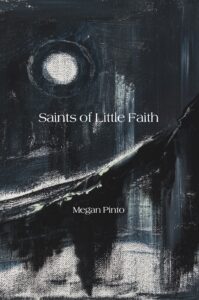I. Reading
Article continues after advertisement
Inside the shelter’s garden level cafeteria, we sat in a circle. Light from the bright, spring afternoons would beat against the floor, imbuing the space with warmth. I felt nervous. I worked in advertising and did not teach poetry for a living. But months earlier, I had received a fellowship from the Peace Studio to support my project of using poetry as a peace building tool. My premise was simple: from my own experience, I had learned that peacefulness in my external life always began within. Spending time absorbed in poetry was one, reliable way I had found to access moments of internal peace.
More than any compulsion—food, emotionally unavailable men, alcohol—it is poetry that has transformed my loneliness into solitude. The art of reading poetry commands my attention, to parse both its sonic and semantic elements. Perhaps because of this, I find that when I am reading a poem, I am absorbed in self-forgetfulness—more present, less plagued by my fears and ruminations. The average person scrolls 88 miles a year. What would happen if we spent some of that time with a poem, standing still? I proposed teaching adult learners outside of academia some strategies for engaging with poetry. This work took place in both a women’s shelter, and a boardroom at an executive offsite.
Spending time absorbed in poetry was one, reliable way I had found to access moments of internal peace.
One of my favorite poems to bring into both rooms was Robert Hayden’s “Those Winter Sundays”. Before reading the poem, I gave this disclaimer: I am going to read the poem out loud, and I invite you to close your eyes, look down at the floor, or do whatever helps you focus your attention. Your only job is to listen. It’s ok if your attention lapses and you drop out. Try to come back to the poem. We’ll have other opportunities to look at the text and read it, so you won’t miss out. And if you do drop out, try to note where in the text that happened; boredom and resistance is information, too.
I’ll invite you, the reader, to close your eyes now, or look down at the floor, and listen.
Then I would invite both groups to tell me what they saw.
“Fire,” “Shoes,” “Offices,” people usually called out.
“Those are images,” I would say, “You’re seeing the world of the poem.”
Pound defined the image as “that which presents an intellectual and emotional complex in an instant of time,” in other words, the image conjures both thinking and feeling. When I am in fight or flight, in my sympathetic nervous system, I cannot simultaneously think and feel. Thinking and feeling simultaneously only happen when I am in my parasympathetic nervous system, the rest and digest state; in this contemplative mode, the multiplicity of a word, of an image, has space to resonate and unfold.
II. Understanding
Here’s the poem in its entirety:
Those Winter Sundays
By Robert Hayden
Sundays too my father got up early
and put his clothes on in the blueblack cold,
then with cracked hands that ached
from labor in the weekday weather made
banked fires blaze. No one ever thanked him.
I’d wake and hear the cold splintering, breaking.
When the rooms were warm, he’d call,
and slowly I would rise and dress,
fearing the chronic angers of that house,
Speaking indifferently to him,
who had driven out the cold
and polished my good shoes as well.
What did I know, what did I know
of love’s austere and lonely offices?
Some other prompts I would give my two groups:
The three “paragraphs” are called stanzas. Stanza is Italian for “room.” What do you see unfolding within each room of the poem?
What do we learn about the father in the first stanza?
How does the speaker feel about the father in the second stanza?
What changes in the third stanza?
How many questions are in this poem?
What is the effect of ending on a question? I mean, what does ending on a question make you, the reader, feel?
This is where things got interesting: in both groups, the poem would lead to self-disclosure, in a space that otherwise required a kind of anonymity. In the shelter during introductions at our opening circle, we stuck to first names, and did not get into people’s stories. In the boardroom, a professionalism that prioritized knowing over not knowing was often required; that, and urgent business problems needed to be addressed and solved.
Through this work, I have had the privilege of hearing about many people’s fathers, many people’s childhood homes. Some did not grow up with fires or heat, because where they lived it was always warm. Others knew Hayden’s coldness well. I would self-disclose too, “My father drove me to school every morning, and used his lunch break to pick me up from school. Sometimes I would go back to the store with him, sometimes he would drop me off at my mother’s work…”
Reading and writing poetry has given me a way to…make meaning from confusion and chaos.
Immediately after college, I worked in theatre. I often heard the phrase “this is show biz, not social work.” But I have often thought about that phrase throughout my twenties, as I sought to study and develop my art. I’ve learned that I am interested in both the biz, and social work. I want to study poetry for the rest of my life and want each book to be “better” (formally innovative, emotionally resonant) than the last. But I also want to live in a world where poetry can be a common denominator. Where it is brought into a space, and everyone is given the basic tools with which to receive it.
Audre Lorde says it best: “Poetry is the way we help give name to the nameless so it can be thought. The farthest horizons of our hopes and fears are cobbled by our poems, carved from the rock experiences of our daily lives…We can train ourselves to respect our feelings and to transpose them into a language so they can be shared” (“Poetry is Not a Luxury”).
III. Love
When I teach Hayden’s poem, I ask my groups: What do we really know of the people that we love? How much of their experience remains a mystery to us?
My peacebuilding project arose while I was revising my book, Saints of Little Faith. At the center of the book is a lyric essay about my father’s psychotic break, which I first wrote by his bedside at the hospital. I felt fear that I would lose my father because we wouldn’t be able to get him the care he needed in time; I felt angry that his illness had escalated to this level; I felt sorrow that I had spent my whole life knowing my father, without really knowing him; I felt rage, for all of it, too. In short, I wanted to hash it out with my father, but my father was no longer there.
Muriel Rukeyser, in The Life of Poetry, writes that “Poetry is a meeting place for different kinds of imagination,” and I return to this quote often, especially when I am spiritually lost. Reading Hayden’s poem in a group allowed us a shared space to let our imaginations linger. We each described the fires, and the fathers, we could or could not quite see, and retold it to each other. In writing my lyric essay, I met my father through my imagination, the last mode I had available to me.
In my own life, reading and writing poetry has given me a way to work through some of my resentments, by allowing me to make meaning from confusion and chaos. Though I falter in my lived experience, bursting into rage or tears, in poetry I can try again. I can linger in another’s experience, and through reading, bring my own imagination and experience to meet it.
We don’t always get to know why. But the love we feel can still be true.
Perhaps in absence of coherent answers, or free flowing self-disclosure, poetry is another medium through which we might get close.
__________________________________

Saints of Little Faith by Megan Pinto is available from Four Way Books.

